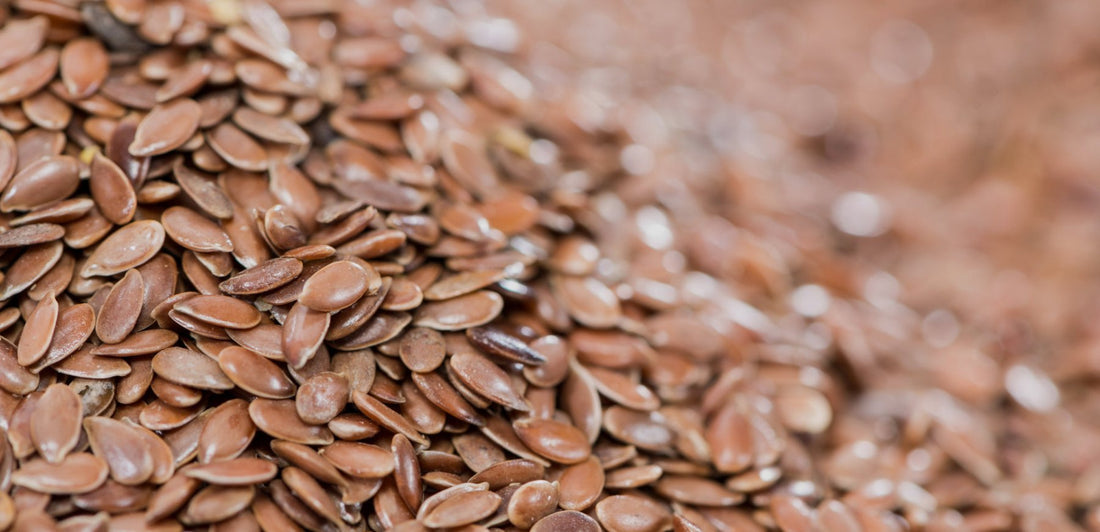From delicate-looking plants to the world’s oldest natural fabric, it’s hard to know exactly what our ancient ancestors saw in the humble flax, but they sure hit fashion gold. Textured, breathable, and often associated with luxury, linen is one of our MVPs. We love how it feels in dresses or the difference it makes to our summer trousers (ie. we actually want to wear them when temperatures are high).
Linen also happens to be an eco-friendly fabric. It has a lower environmental footprint than conventional cotton, requiring less resources to be cultivated, and is prized for its longevity. All of which helps to explain how linen made up 5% of TWOTHIRDS’ total fibre share in 2022.
An estimated 1 million tonnes of linen is produced annually. It’s an increasingly popular choice among slow fashion fans, and yet not everyone knows the facts behind linen’s rise and rise, so we’ve prepared a quick cheat sheet. This is all you need to know about eco-friendly linen!
1. Flax Absorbs CO₂
While linen is generally seen as an eco-friendly option, the positive impact of the original crop often goes unacknowledged. As reported by Euro News, a field of flax can offset “3.7 tons of CO₂ every year; that's equivalent to the emissions from the average car if you drove it for nearly 6 days without stopping.”
Not only a (modest) remedy to the climate crisis, flax is also highly adaptable. This could make it a climate resilient crop as the planet warms; a sustainable option for farmers and fashion lovers alike.
2. Linen Is Not A Heavy Drinker
Here’s a sobering fact: intensive cotton production has been linked to ecosystem destruction and the draining of water systems (though reports of “thirsty cotton” have probably been exaggerated). Cut to eco-friendly linen and the story couldn’t be more different. Flax doesn’t need much human intervention to grow successfully, and requires less water than cotton.
That said, as with cotton, fertilisers or pesticides may be used during the cultivation process. It has been reported that linen requires 13 times fewer pesticides than potatoes (we know, a strange comparison)!
3. Linen Is Biodegradable
Eco-friendly linen is also biodegradable, which means it will decompose naturally and won't contribute to landfill waste. One disclaimer here: that is only completely true when the chosen colours are undyed (ivory, ecru, tan, and grey).
The biodegradability of linen provides a great counterpoint to the booming synthetic market. Synthetics - like polyester - take hundreds of years to break down under natural conditions. While recycling is an option there, linen is environmentally superior in the first place.
4. Linen Requires A Little TLC
Okay, so eco-friendly linen can be a shrinking violet (read: sensitive soul). You’d be wise to treat it with kindness, by following these steps -
- Wash on 30 degrees - this avoids shrinking.
- Handwash by swirling the linen garment instead of twisting or scrubbing.
- Use a natural detergent.
- DON’T use a softener, but DO use white vinegar - which will soften the garment naturally.
- Bleach is a big no.
- Let linen get soaking wet and leave it to dry hanging up - this will stretch out the creases.
- Store in a cool, dry place.
Linen is a contradictory kinda guy - even while it can be sensitive under certain conditions it is also one of nature’s strongest fibres…
5. Linen Is A Tough Cookie
As Zerrin writes, of linen’s robustness: “this is thanks to cellulose fibres in the yarn whicwh are slightly longer and wrapped tighter than cotton yarn.” Eco-friendly linen is famed for going the distance - it can easily outlast cotton. If you need any proof of this, remember that the oldest dress in the world (5000 years old to be precise) is made from linen!
6. Linen Loves Summer
Eco-friendly linen is notoriously summery: it’s naturally thermoregulating which makes it adaptable to a variety of climates. It is also more breathable than cotton fibres, meaning that wearing it feels like a breeze.
The Next Level: Organic Linen
Our main linen fabric is Oeko-tex certified. That doesn’t mean the eco-friendly linen is organic but it does mean it’s free of certain unfavourable chemicals. Think of it like this: Oeko-tex certification applies to the manufacturing of linen, whereas “organic” would apply to its cultivation. Oeko-tex confirms that the final fabric is harmless for humans to wear. It guarantees the avoidance of potentially hazardous chemicals that could otherwise be used to treat the material.
Given the perception and understanding of linen as an eco-friendly fabric, we haven’t thought it necessary to secure organic certification for our linen. It is, however, on our radar - and will depend largely on how well we manage to clear current linen stock.
Shop the latest eco-friendly linen garments for Men and Women - or pick up a bargain in our Sale category!








